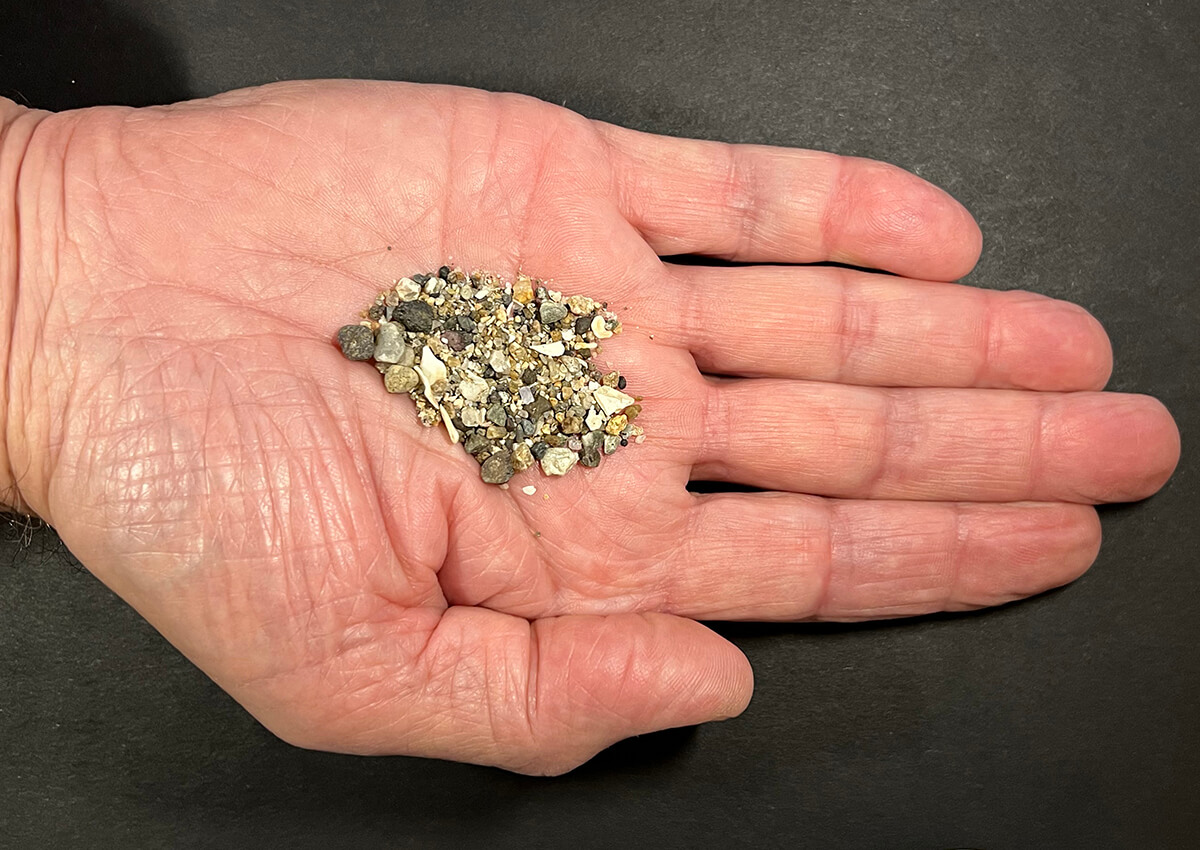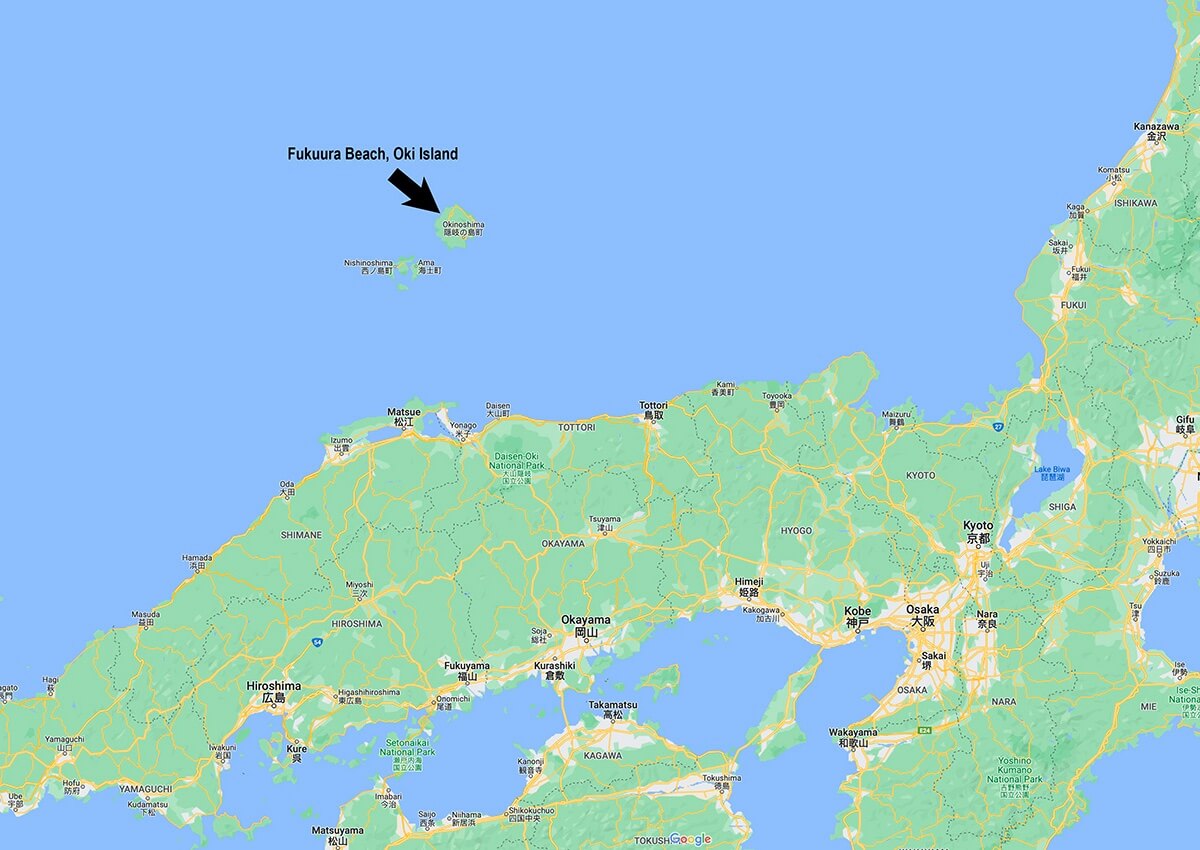Fukuura Beach
Originally part of the Asian mainland, the volcanic Oki Islands separated from the Asian mainland 10,000 years ago. Four of 180 islands that make up the archipelago are inhabited. Known for their natural beauty and scenic coastlines, Oki Islands are currently classified as a UNESCO Global Geopark.
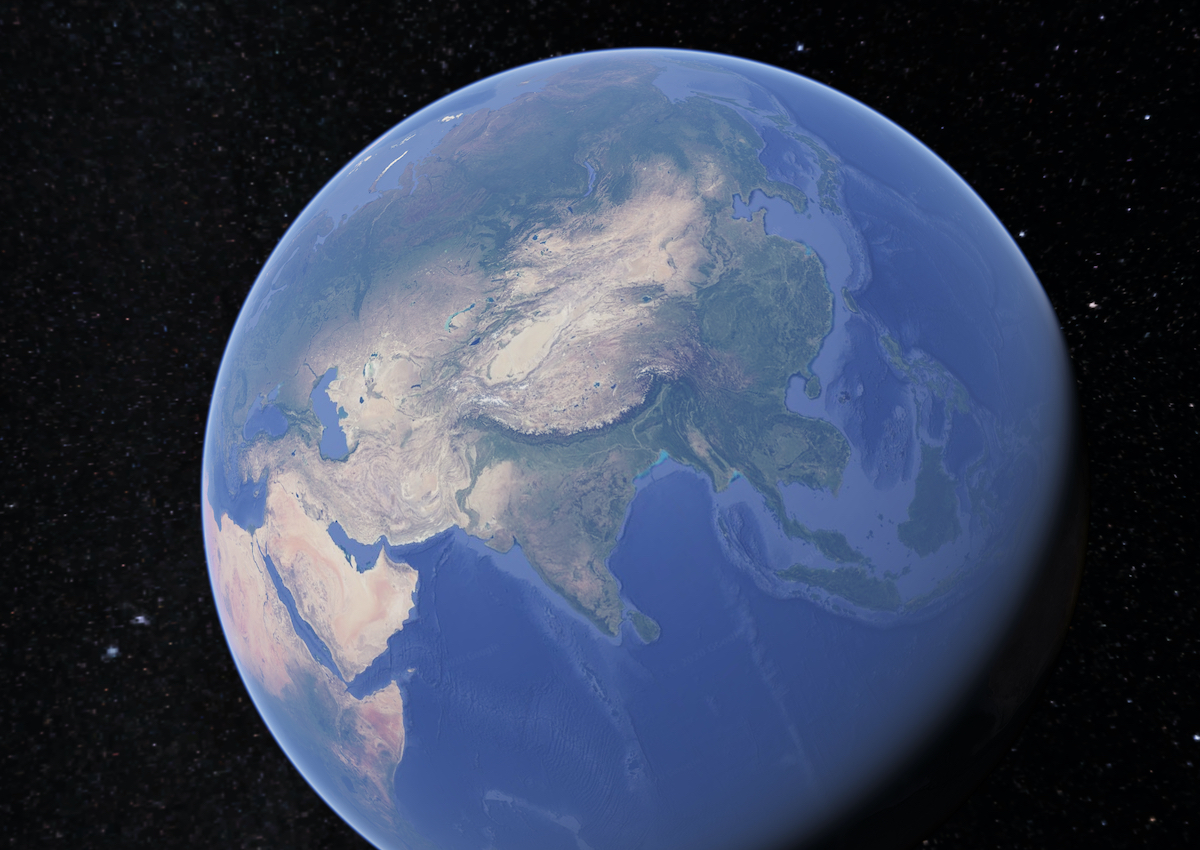
Virtual Sand Tour
Explore an interactive map of Oki Island.
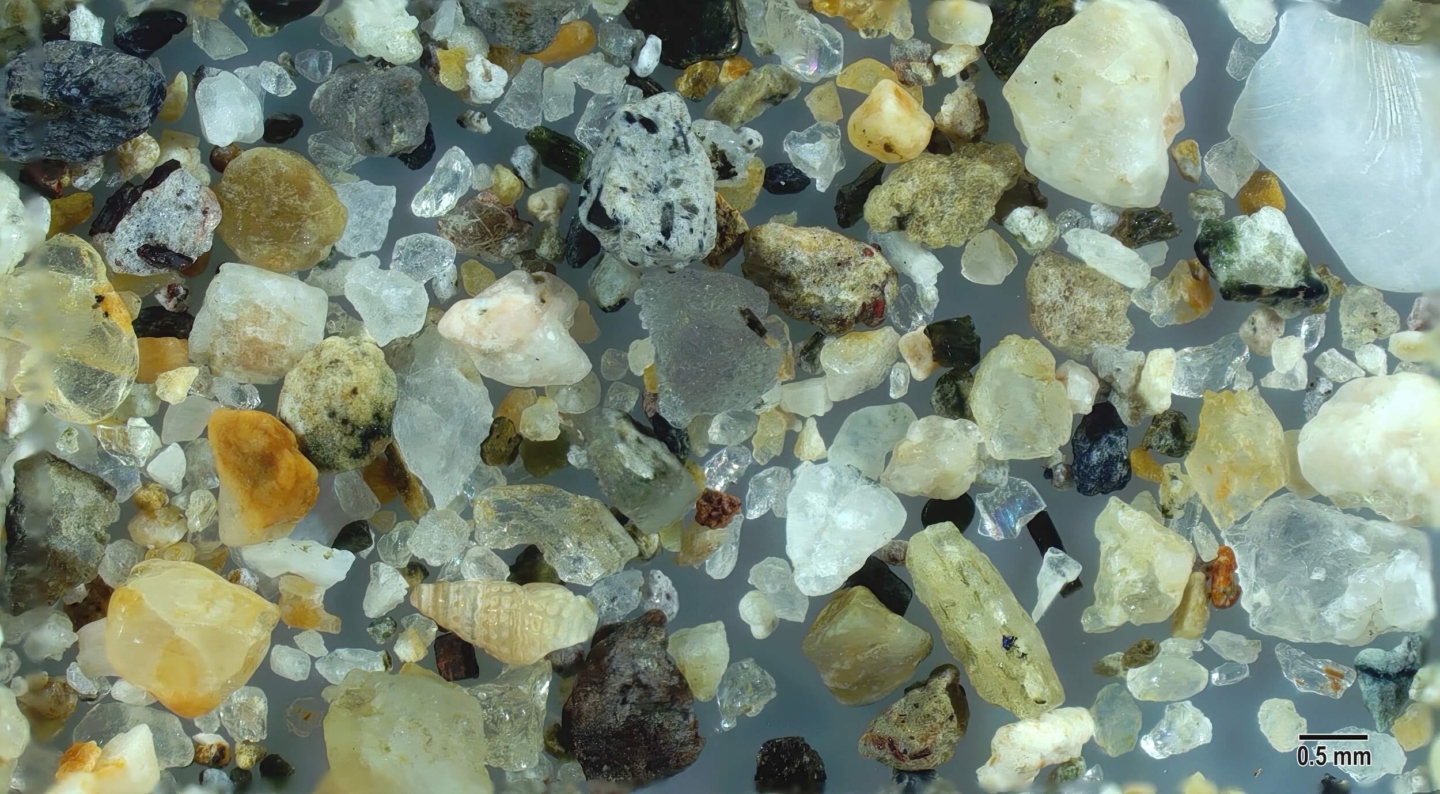
This is a mixture of marine and geological sand grains. A large semi-translucent grain in the upper right corner is a marine shell fragment. A light tan conical snail shell fragment is at the lower left. The light and dark gray sand grains with black crystalline-like inclusions in the upper center and upper left edge are pieces of igneous rock; the black inclusions are most likely hornblende.
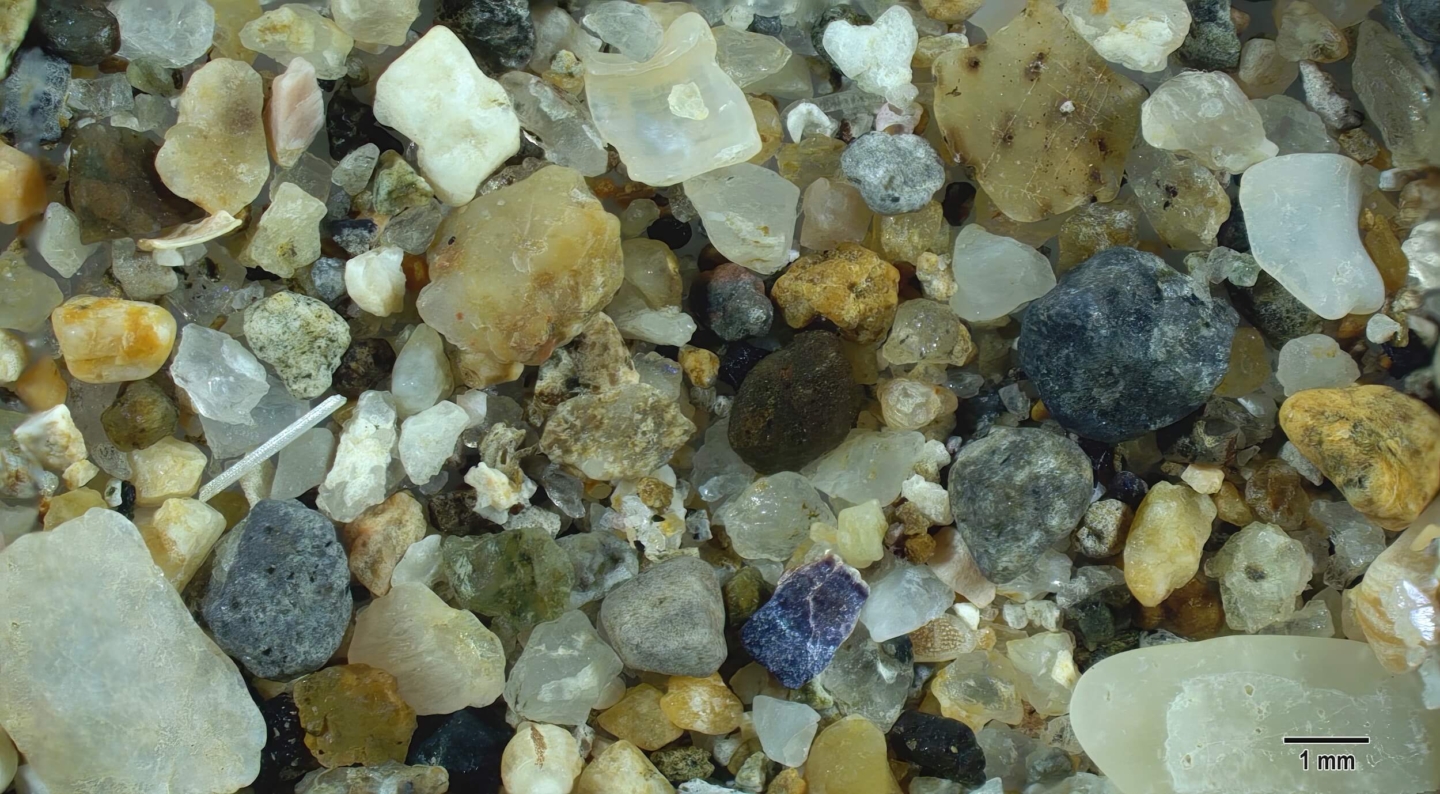
Smooth off-white fragments such as the large one in the lower right corner are pieces of marine shells. A thin linear white slightly refractile sea urchin fragment is prominent on the middle left and the prominent blue sand grain near the lower center of the image is likely a muscle shell fragment. Lighter and darker colored geological sand grains, some with smooth edges, are well represented in this sample.
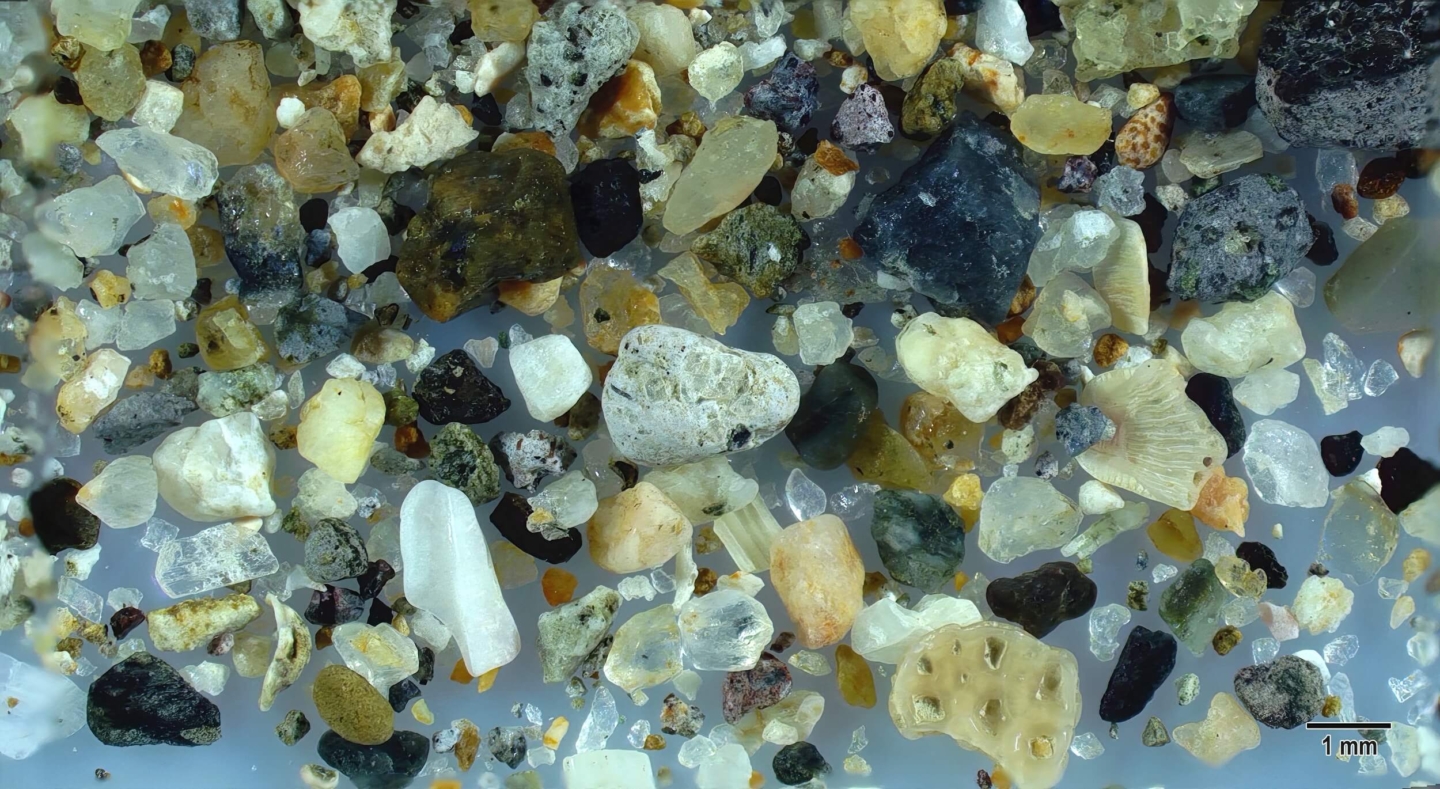
Light and dark gray and black geological sand grains with mottled texture are volcanic. Large and small clear pieces of quarts are most noticeable in the along the bottom of this sample. White fragments of marine shell fragments are present near the center along with a light tan barnacle fragment with parallel linear markings and openings in the middle right of this image.
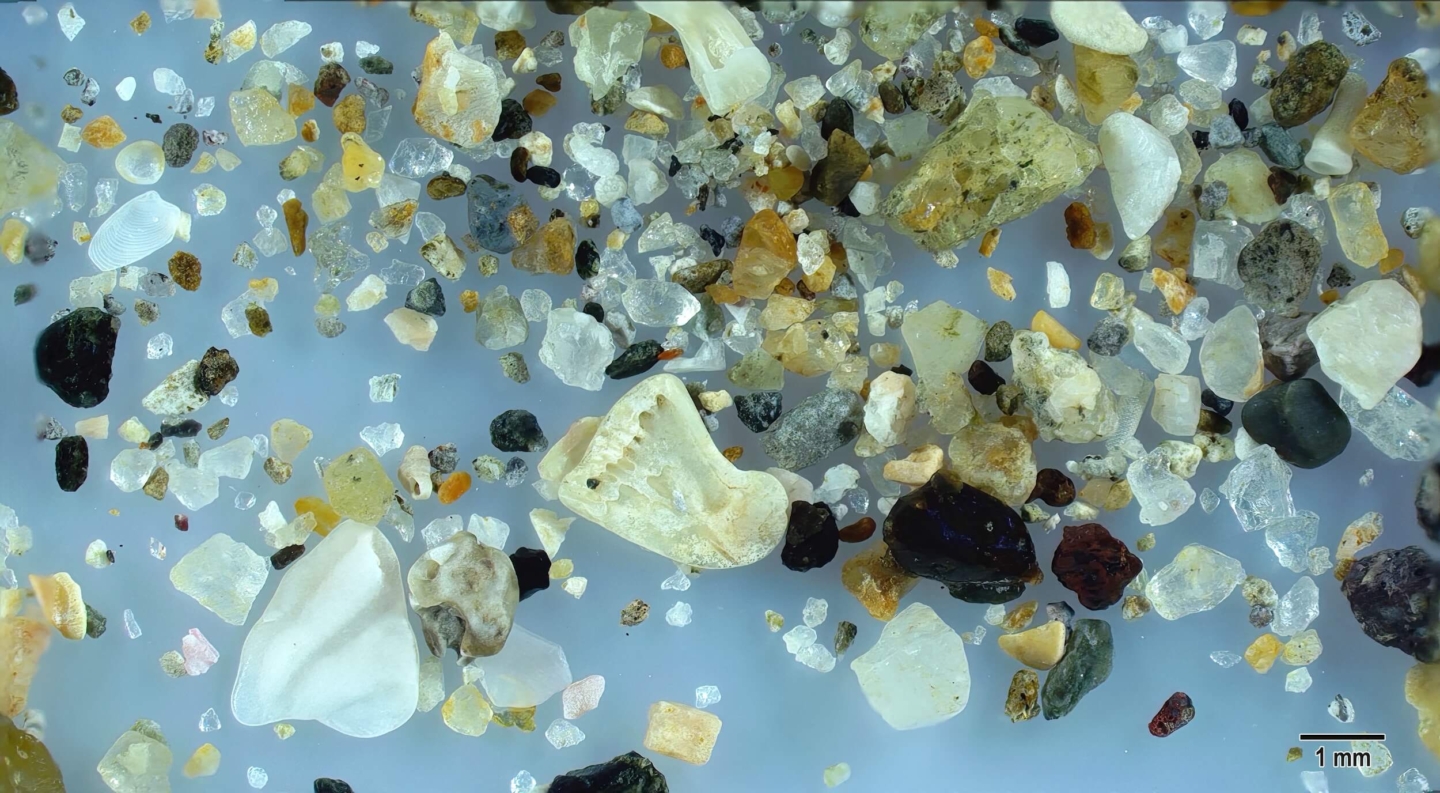
Large and small sharp-edged clear quartz grains and black geological sand grains with relatively smooth edges are present through this sample. Large white marine sand grains, including a foot-shaped off-white fragment of barnacle shell plate in the center, are also present in this sample.
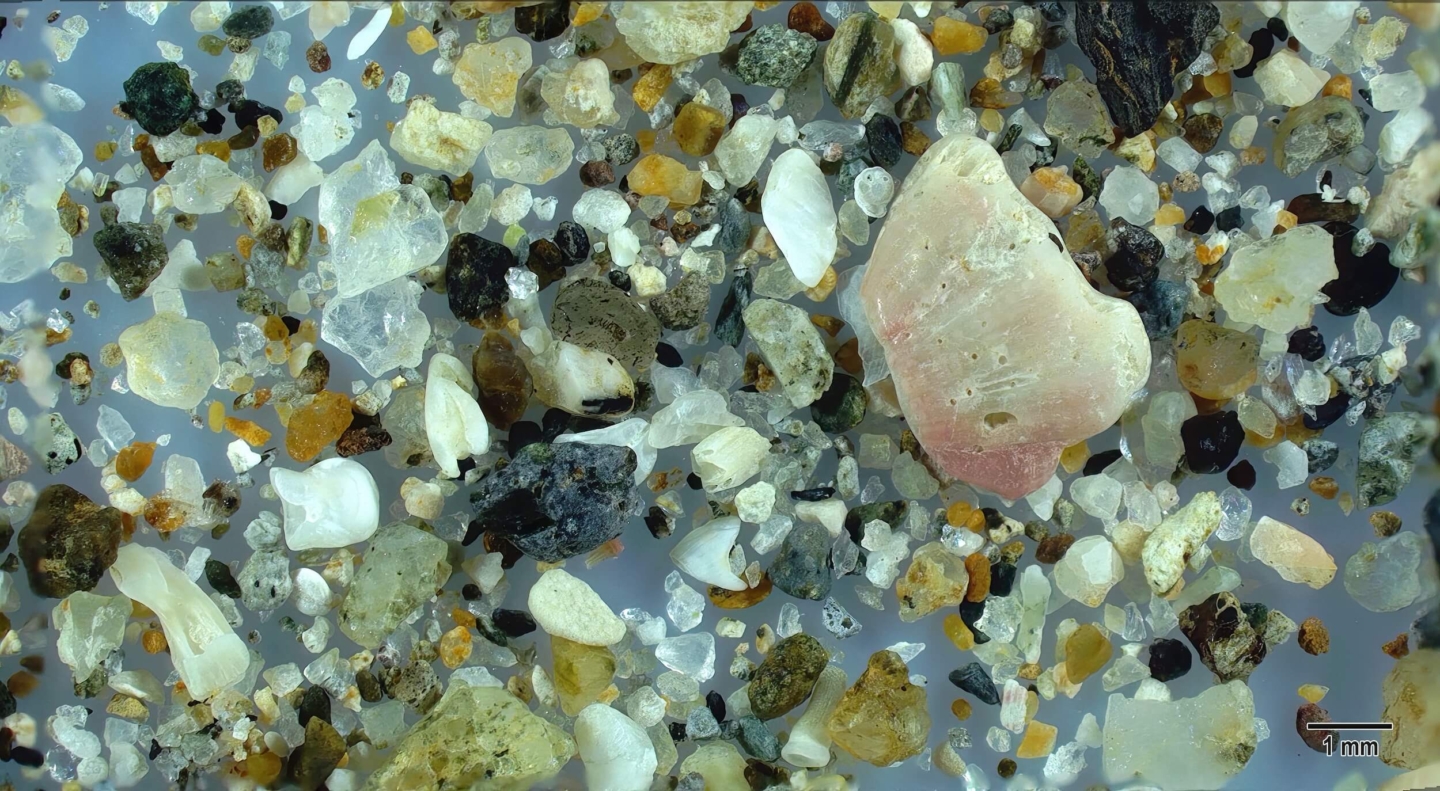
This sample includes metamorphic rock with black inclusions (probably hornblende) in addition to clear quartz and light tan feldspar grains. A variety of white and off-white marine shell fragments are present through this sample in addition to the large pink-tan barnacle fragment that has fine drill holes as evidence of predation.
